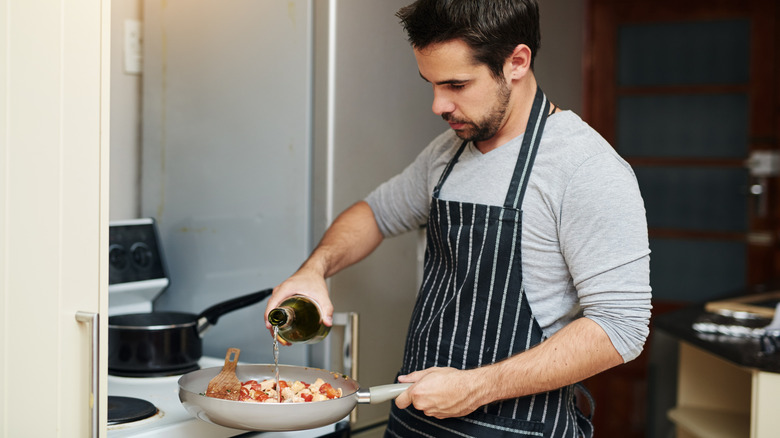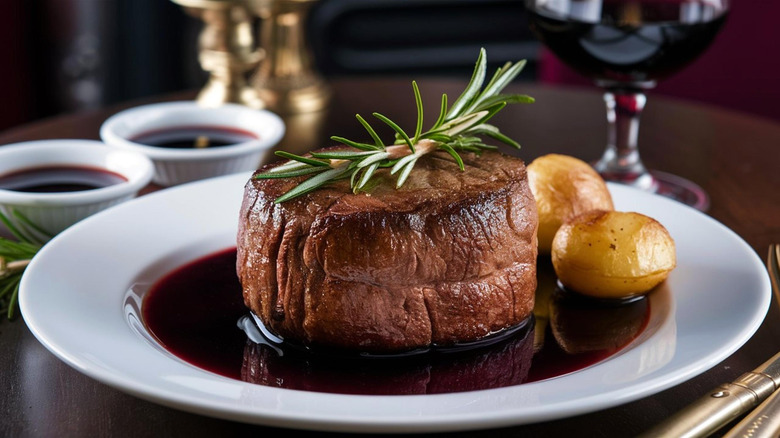Does Alcohol Actually Burn Off During Cooking?
There is a long-held assumption that alcohol burns off during the cooking process. While this isn't necessarily untrue, there are a number of caveats. Ultimately, no amount of cooking can entirely remove all the alcohol content, but certain methods can bring it down to as little as 5%.
There are multiple factors to consider when understanding alcohol evaporation in cooking; temperature, cooking vessel size, time, and type of alcohol in use. A less direct, but still impactful factor, is the other ingredients in the dish. Higher temperatures and longer cooking times will always result in more significant alcohol dissipation as these form the broadest parameters for success. Larger cooking vessels are also more effective than smaller ones, simply because a larger surface area offers more opportunity to spread the alcohol out, and the direct contact with the heat does the rest.
The USDA Table of Nutrient Retention Factors breaks down that baking or simmering alcohol in dishes for 15 minutes (which is ample simmering time for most foods) will still result in around 40% alcohol retention, and only brings it down to 25% retention after a full hour. By 2.5 hours, only 5% will remain. It's important to note, according to food science author Harold McGee, that remnants of alcohol in cooked dishes cannot cause intoxication in adults. The volume of alcohol used in cooking is too minimal for someone to feel any difference, especially after applying heat for an extended period of time.
Lesser known factors that affect final alcohol levels
Temperature, time, and surface areas are the main determinants in alcohol retention, but they aren't the only ones. The type of alcohol you use can greatly affect the level you end up with, even if you use the same volume. The ABV (alcohol by volume) level of beer is typically between 4-6%, whereas with bourbon it is usually around 40%. This naturally means that even if you cook a dish at the same heat, for the same amount of time, in the same sized vessel, you're going to end up with a far more alcoholic meal if it was cooked in bourbon (though don't worry about baking a maple-bourbon sweet potato pie, these contain very little liquor). For this reason, beers are very popular cooking additions as they bring a lot of flavor with virtually no alcohol content. So for your next taco Tuesday, enjoy some beer-battered shrimp tacos.
Another factor is the other ingredients in the dish. It's the direct application of heat to alcohol that results in it evaporating, so anything blocking this contact will limit that. Thick sauces that contain alcohol, even when boiled, can retain up to as much as 85% of their original alcohol levels, purely because there is too much else going on in the pot for the alcohol to really feel the heat. Breadcrumbs as well, to a lesser extent, can soak up the alcohol and inhibit evaporation. If you're looking to explore white wine-spiked peas, trust that this dish will be flavorful, though it may still retain a good amount of buzz (again, not enough to intoxicate, but enough to be mindful about).


